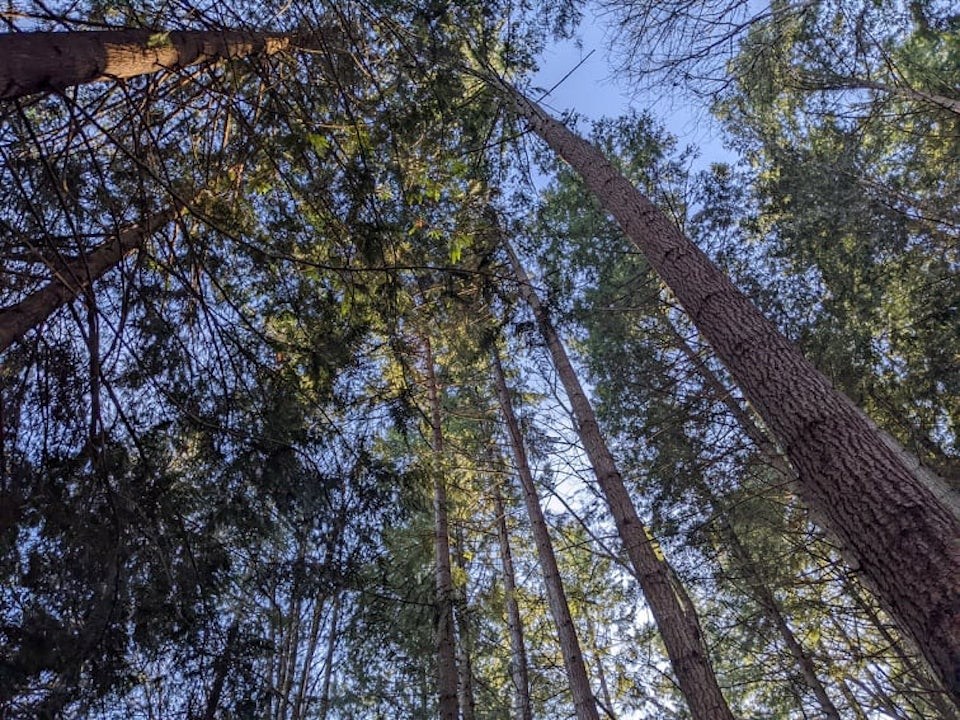The March 29 Ministry of Forests online session on the Sunshine Coast Timber Supply Area review drew about a half dozen public attendees.
Jillian Tougas, acting district manager for the region moderated the session and the five representatives of the meeting’s host organization made up just under half of the Zoom meeting attendees.
Executive director of the Sunshine Coast Conservation Association (SCCA), Suzanne Senger, participated in the event and told Coast Reporter in an April 4 email the low attendance at the meeting was likely a combination of the ministry’s limited circulation of invitations and public disengagement on the subject “because the timber supply review [TSR] process is so complex”.
Analysis supports higher cuts
Based on timber supply review data and rationale along with input received in the public process, the chief forester has been tasked with setting a new allowable annual cut (AAC) for the Sunshine Coast Timber Supply Area later this year.
The area’s existing AAC, set in 2013, is 1.204 million cubic metres (mcm). The ministry’s summary document states that AACs are reviewed every 10 years and that this area’s current review examines two scenarios. The first reflects current practices that address operational, economic, and First Nations values. That indicates an initial annual harvest level of 1.273 mcm and levels of 1.223 mcm achievable over the rest of the 300-year planning period. The second scenario, following only legally established forest management objectives, would support an initial annual harvest level of 1.557 mcm, dropping to 1.463 mcm in future years.
The current AAC for the region is down from the 1986 level of 1.429 mcm. Its AAC was at its lowest level in 1993 at 1.1 mcm and gradually increased up to its present level.
Watershed and other concerns not addressed
Senger identified what the organization views as “serious problems with the TSR data package, analysis and systemic issues with the review process and BC forest management practices” as they focus on a forest plantation model rather than on forest stewardship.
“The TSR is not a step toward the 'paradigm shift' promised by the province with respect to watershed stewardship, old growth protection, species at risk, and biodiversity conservation. Its recommendations ignore local government and community needs and values around natural asset management, climate adaptation, and mitigation.”
During the online meeting, the SCCA posted a comment that read, “Do a quick search of the [TSR] document and you will note that the terms watershed, drinking water, aquifer, and climate change don’t show up in the discussion paper.”
The association is looking forward to the posting of all questions and responses from the online session on the ministry website as public information. Senger noted that staff at the event committed to doing that.
Comment period open to May 1
The comment period on the TSR is open until May 1 and submissions can be forwarded by phone to 250-286-9300 or via email to [email protected].
Senger stated that the SCCA has been reviewing and commenting on area TSR packages since the 1990s. “We are collaborating with Tuwanek Ratepayers as well as quathet Old Growth and My Sea to Sky to review the data package and discussion paper and craft a detailed submission to the Chief Forester," she wrote.
Once that is completed in mid-April, Senger indicated the SCCA plans to launch a campaign to encourage local residents to lobby the ministry, asking that the TSR be “revised to incorporate current knowledge and Sunshine Coast communities’ long-term resilience.”



